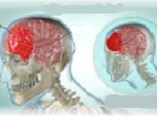Frequency of Dysnatremia in the First 24 Hours and Its Relationship with Mortality in Patients with Severe Brain Trauma
Dysnatremia and Head Trauma
DOI:
https://doi.org/10.31661/gmj.vi.3591Keywords:
Dysnatremia; Mortality; Brain TraumaAbstract
Background: Dysnatremia is known to make hospitalized traumatic brain injury (TBI) patients vulnerable to morbidity and mortality. This investigation aimed at observing frequency of dysnatremia in the first 24 hours and its relationship with mortality in patients with traumatic brain injuries. Materials and Methods: This prospective descriptive-analytical study was conducted at Hashminejad Hospital in Mashhad from April 2023 to March 2024. The study sample included patients with severe traumatic brain injuries. Information about each patient, including age, sex, Glasgow coma score, blood pressure, plasma sodium, creatinine, serum sugar, calcium, potassium, blood urea nitrogen, and blood pressure at the beginning of admission. Results: A total of 81 patients with traumatic brain injuries, with an average age of 40.33 ± 19.47 years were included in the study; 85% were male and 15% were female. 32 patients (40%) died and the rest were discharged. Out of a total of 81 patients included in the study, 36 (44.5%) suffered from dysnatremia. 16 patients (19.8%) had hyponatremia and 20 (24.7%) had hypernatremia. The statistical results did not show any significant relationship between the sodium status of patients and their outcome. statistical analysis showed that the patient’s sodium level during hospitalization is not a predictor of mortality. Diastolic blood pressure and blood sugar in deceased patients were substantially higher than alive patients. the only factor that could predict the death of patients was blood sugar, so that every incremental rise in glucose level increased the chance of death by 1.018 times. Conclusion: The present study showed that although dysnatremia has no significant relationship with the outcome of brain trauma patients, it needs attention due to its high incidence rate (44.5%) in these patients. In addition, blood sugar was introduced as a factor that could predict the death of patients.
References
Ngatuvai M, Martinez B, Sauder M, Beeton G, Andrade R, Maka P, et al. Traumatic Brain Injury, Electrolyte Levels, and Associated Outcomes: A Systematic Review. Journal of Surgical Research. 2023;289:106-15.
https://doi.org/10.1016/j.jss.2023.03.029
PMid:37087837
Kolmodin L, Sekhon MS, Henderson WR, Turgeon AF, Griesdale DE. Hypernatremia in patients with severe traumatic brain injury: a systematic review. Annals of intensive care. 2013;3:1-7.
https://doi.org/10.1186/2110-5820-3-35
PMid:24196399 PMCid:PMC3826846
Rodríguez-Triviño CY, Castro IT, Dueñas Z. Hypochloremia in Patients with Severe Traumatic Brain Injury:A Possible Risk Factor for Increased Mortality. World Neurosurgery. 2019;124:e783-e8.
https://doi.org/10.1016/j.wneu.2019.01.025
PMid:30682506
Shanavas C, Basheer N, Alapatt JP, Kuruvilla R. A prospective study on hyponatremia in traumatic brain injury. Indian Journal of Neurotrauma. 2016:094-100.
https://doi.org/10.1055/s-0036-1592186
Maggiore U, Picetti E, Antonucci E, Parenti E, Regolisti G, Mergoni M, et al. The relation between the incidence of hypernatremia and mortality in patients with severe traumatic brain injury. Critical Care. 2009;13:1-9.
https://doi.org/10.1186/cc7953
PMid:19583864 PMCid:PMC2750153
Kiaei BA, Farsani DM, Ghadimi K, Shahali M. Evaluation of the relationship between serum sodium concentration and mortality rate in ICU patients with traumatic brain injury. Archives of Neuroscience. 2018;5(3):e67845.
https://doi.org/10.5812/ans.67845
Wright WL. Sodium and fluid management in acute brain injury. Current neurology and neuroscience reports. 2012;12:466-73.
https://doi.org/10.1007/s11910-012-0284-5
PMid:22622407
Bhardwaj A. Neurological impact of vasopressin dysregulation and hyponatremia. Annals of Neurology: Official Journal of the American Neurological Association and the Child Neurology Society. 2006;59(2):229-36.
https://doi.org/10.1002/ana.20788
PMid:16437573
Amini S, Heydari Z. Sodium disturbances and its relation with mortality and morbidity in. head trauma patients admitted to the general ICU at Zahedan Khatam-Al-Anbia Hospital : from May 2003 to September 2004; 2007.
Sean K, Kolmodin L, Sekhon MS, Qiao L, Zou J, Henderson WR, et al. The effect of continuous hypertonic saline infusion and hypernatremia on mortality in patients with severe traumatic brain injury: a retrospective cohort study. Canadian Journal of Anesthesia. 2016;63(6):664.
https://doi.org/10.1007/s12630-016-0633-y
PMid:27030131
Li M, Hu YH, Chen G. Hypernatremia severity and the risk of death after traumatic brain injury. Injury. 2013;44(9):1213-8.
https://doi.org/10.1016/j.injury.2012.05.021
PMid:22709549
Rayatdost E, Esaie M, Rashidi M. Morbidity and Mortality Associated with Dysnatremia in Patients with Severe Traumatic Brain Injury. Updates in Emergency Medicine. 2022;2(1):46-50.
Vedantam A, Robertson CS, Gopinath SP. Morbidity and mortality associated with hypernatremia in patients with severe traumatic brain injury. Neurosurgical focus. 2017;43(5):E2.
https://doi.org/10.3171/2017.7.FOCUS17418
PMid:29088954
Moro N, Katayama Y, Igarashi T, Mori T, Kawamata T, Kojima J. Hyponatremia in patients with traumatic brain injury: incidence, mechanism, and response to sodium supplementation or retention therapy with hydrocortisone. Surgical neurology. 2007;68(4):387-93.
https://doi.org/10.1016/j.surneu.2006.11.052
PMid:17905062
Carney N, Totten AM, Reilly C, Ullman JS, Hawryluk GW, Bell MJ, et al. Guidelines for the management of severe traumatic brain injury. Neurosurgery. 2017;80(1):6-15.
https://doi.org/10.1227/NEU.0000000000001432
PMid:27654000
Alam HB, Vercruysse G, Martin M, Brown CVR, Brasel K, Moore EE, et al. Western Trauma Association critical decisions in trauma: management of intracranial hypertension in patients with severe traumatic brain injuries. Journal of Trauma and Acute Care Surgery. 2020;88(2):345-51.
https://doi.org/10.1097/TA.0000000000002555
PMid:31999657
American College of Surgeons. Acs TQIP. Best practices in the management of Traumatic brain injury: 2015 American College of Surgeons; Available from: https://www.facs.org/media/mkej5u3b/tbi_guidelines.pdf. Accessed March 12, 2024.
Hampton OP. The Committee on Trauma of the American College of Surgeons 1922-1972. Bull Am Coll Surg. 1972;57:7-13.

Published
How to Cite
Issue
Section
License
Copyright (c) 2025 Galen Medical Journal

This work is licensed under a Creative Commons Attribution 4.0 International License.







